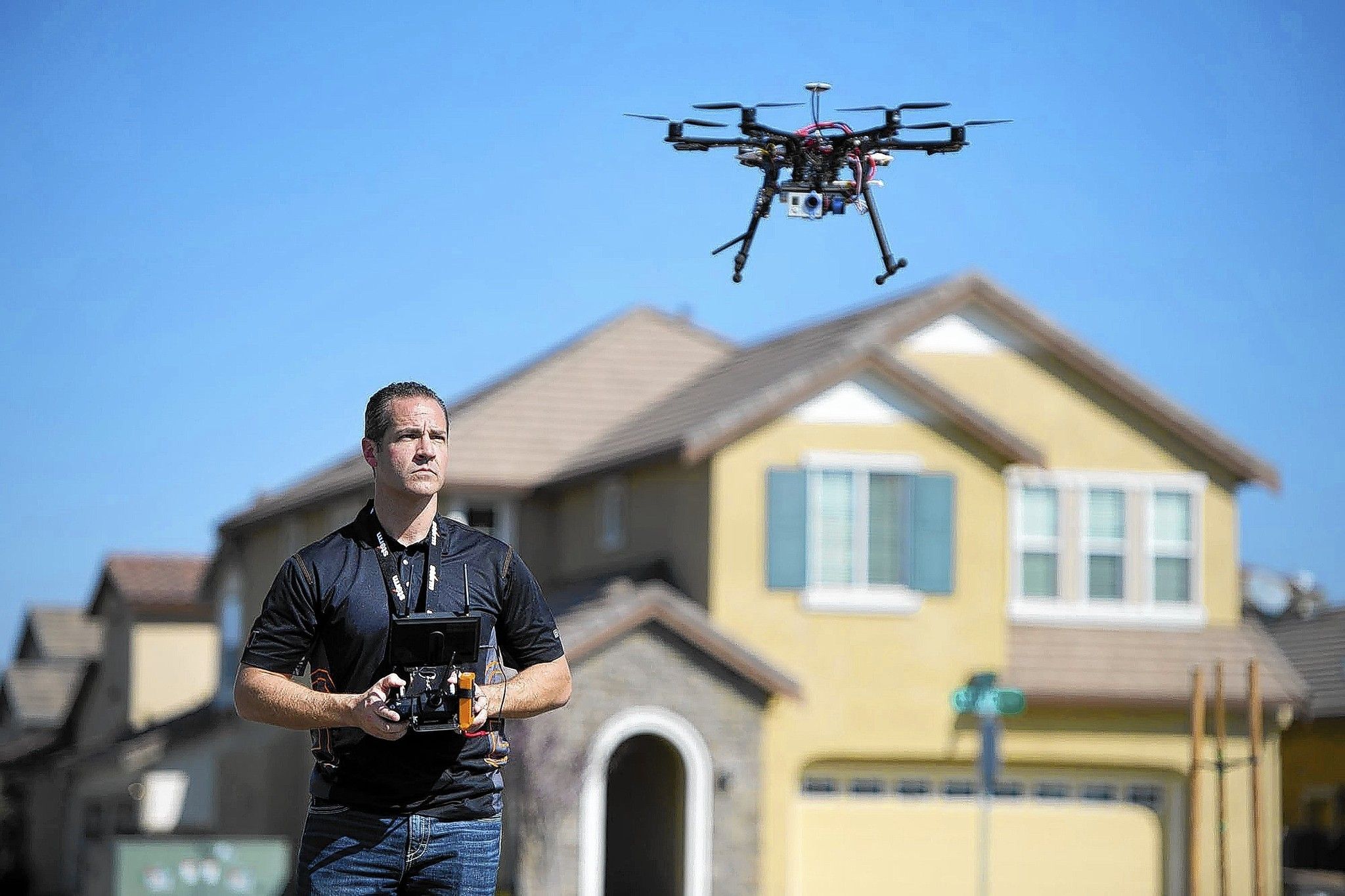Construction sites are dynamic environments with heavy machinery, intricate structures, and often hazardous conditions. Ensuring the safety of workers and the integrity of the construction project is paramount. Traditionally, construction site inspections were carried out by humans, putting them at risk in challenging and dangerous situations. However, as technology advances, inspection drones have emerged as a game-changer in the construction industry. This blog will explore how drones are revolutionizing construction site safety and efficiency.
Inspection Drones are A Valuable Tool for Law Enforcement
Access Hard-to-Reach Areas
One of the primary advantages of using drones on construction sites is their ability to access hard-to-reach areas. Many construction projects involve tall buildings, bridges, and power lines, which can be challenging for human inspectors to access safely. Drones can fly over these areas effortlessly, providing a bird’s-eye view of potential hazards.
Imagine a construction project involving a high-rise building. Climbing the scaffolding or using cranes to inspect the upper floors can be time-consuming and risky. Drones can hover at various altitudes, capturing detailed images and videos of the structure. This aerial perspective allows for a comprehensive assessment of the construction site’s safety, identifying issues that might have been overlooked with traditional methods.
Collect Data Quickly and Easily
Efficiency is a key factor in construction projects. Delays can be costly, and the ability to quickly collect accurate data is essential. Drones excel in this regard. They can cover a large area relatively quickly, collecting data that would be difficult or impossible to obtain using traditional methods.
For example, a drone equipped with thermal imaging technology can identify temperature variations in concrete, helping detect weak points or potential structural problems. This data can be invaluable for construction site safety, allowing timely interventions to prevent accidents or structural failures.
Safe Alternative to Humans
Safety is a top priority on construction sites, and drones offer a significant advantage by reducing the need for humans to perform risky tasks. In hazardous or difficult areas, sending a drone for inspection minimizes the potential dangers to workers.
Consider inspecting a construction site near a cliff edge or over water. Instead of exposing workers to these risks, a drone can conduct the inspection safely. This not only protects human lives but also reduces liability for construction companies.
Help to Prevent Accidents
In addition, accidents on construction sites can have devastating consequences, ranging from injuries to fatalities and financial losses. Drones play a vital role in accident prevention by identifying potential hazards before they escalate into emergencies.
A drone equipped with high-resolution cameras can detect issues like loose scaffolding, uneven terrain, or equipment malfunctions. By spotting these problems early, construction teams can take corrective actions, preventing accidents from occurring in the first place. This proactive approach saves lives and preserves the project timeline and budget.
Improve Efficiency
Time is money in the construction industry, and delays can increase costs. Drones offer a solution to improve efficiency in construction site inspections. They can cover vast areas quickly and precisely, reducing the time needed for thorough assessments.
Imagine a large-scale construction project involving miles of pipeline installation. Traditional methods would require a significant amount of time and manpower to inspect every inch of the pipeline. In contrast, drones can fly over the entire route quickly, identifying potential issues such as leaks, damage, or misalignments.
Improve Quality
Quality control is essential to ensure that structures meet safety standards and specifications. However, drones contribute to quality improvement by identifying potential hazards and defects early in construction.
For example, a drone equipped with LiDAR technology can create detailed 3D models of construction sites. These models provide insights into the accuracy of building dimensions, ensuring that the structure aligns with architectural plans. By catching discrepancies early, costly rework can be avoided, and project quality is enhanced.
From Vision to Reality
As we peer into the future of construction site safety, inspection drones are poised to play an even more pivotal role. Advancements in automation and artificial intelligence will lead to autonomous drones capable of performing inspections with minimal human intervention. These drones will improve efficiency and enhance safety by reducing the potential for human error. Moreover, integrating drones into the broader construction site ecosystem, including IoT sensors and smart equipment, will provide a comprehensive view of site conditions and performance. The construction industry is on a trajectory where drones will become standard tools, revolutionizing how projects are planned, executed, and maintained and ensuring that safety remains at the forefront of construction practices.
Reduce Environmental Impact
Environmental sustainability is a growing concern in construction. Traditional inspection methods often involve using vehicles that emit harmful greenhouse gasses. Drones, on the other hand, are environmentally friendly. They run on electricity and produce zero emissions, making them an eco-conscious choice for construction site inspections.
By reducing the carbon footprint of inspections, drones contribute to a greener construction industry. This aligns with the global push for sustainable practices and helps construction companies meet environmental regulations more effectively.
The Future of Construction Safety
As technology advances, drones are poised to become integral to construction site safety. They offer numerous advantages traditional methods cannot match, from accessing hard-to-reach areas to providing quick and accurate data collection.
Drones are already gaining popularity in the construction industry, with many companies recognizing their potential to save lives and money. As the technology matures and becomes more affordable. So, their adoption will likely increase further. However, construction professionals are beginning to realize that drones are not just a convenience but a necessity for ensuring the safety and success of construction projects.
Construction Site Safety
In addition, construction site safety is paramount, and drones are emerging as guardians of workers in this high-risk environment. These aerial devices can access areas that are challenging for humans to reach, such as tall structures, bridges, and power lines, all while keeping human inspectors out of harm’s way. By flying over these areas, drones provide a comprehensive view of potential hazards, from structural weaknesses to equipment malfunctions. Therefore, helping construction teams address issues proactively. This not only saves lives but also reduces liability for construction companies. However, demonstrating the invaluable role drones play in ensuring the well-being of workers.
Efficiency Amplified
In the fast-paced construction world, time is a precious resource, and delays can translate into significant costs. The drones offer a compelling solution by significantly enhancing efficiency. Their ability to cover extensive areas rapidly and their capacity to collect data that would be challenging to obtain through traditional methods expedite the inspection process. Consider large-scale construction projects involving miles of pipelines or expansive industrial complexes; drones can swiftly identify issues, such as leaks or structural concerns. Although, allowing for timely interventions that keep projects on schedule and within budget. The initial investment in drone technology is often outweighed by the long-term savings in time and money. Moreover, making them a cost-effective choice for construction companies.
Conclusion
In conclusion, inspection drones have emerged as a crucial tool in enhancing the safety and efficiency of construction sites. Their ability to access hard-to-reach areas, collect data rapidly, and reduce human exposure to hazards makes them invaluable assets in the construction industry. Drones not only help prevent accidents but also improve the overall quality of construction. However, reduce environmental impact, and streamline the inspection process.
As technology advances, drones are set to become the future of construction site safety. Their integration into construction practices is a testament to the industry’s commitment to innovation and sustainability. Embracing drone technology is a smart move for construction companies and a significant step toward making construction sites safer and more efficient for everyone involved.





